#but yeah peter jackson is an epic geek and I love him for that
Photo
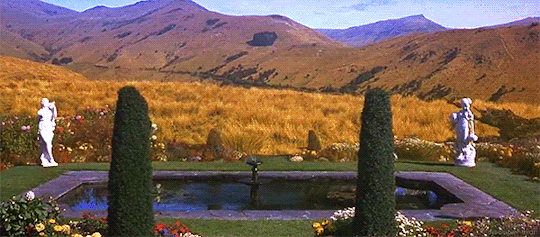
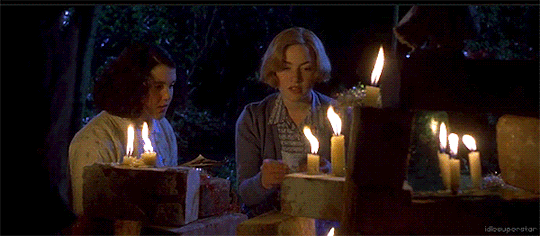

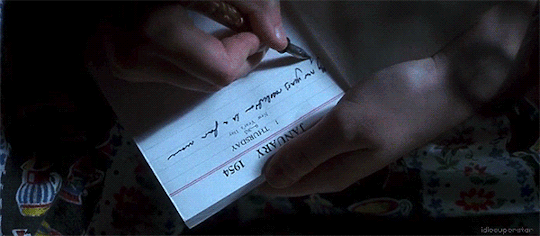
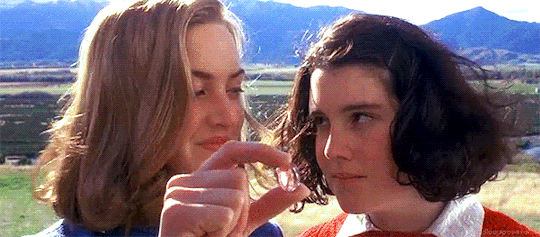
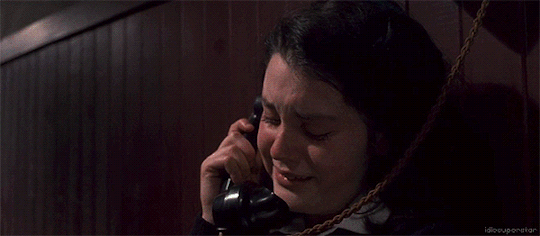

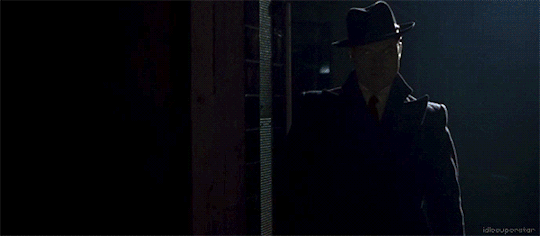

- We have decided how sad it is for other people that they cannot appreciate our genius.
#heavenly creatures#kate winslet#melanie lynskey#I've been meaning to rewatch this for flipping years and only just got round to it again#saw it at the flicks when it came out and was blown away by it#and it is still SUCH a remarkable film#not only is it brilliantly acted beautifully designed#it is so emotionally powerful it's astonishing#I had also forgotten that peter jackson shot inserts for the third man with jean guérin playing orson#they are fucking SEAMLESS honestly if you know the film it is astonishing#obvs he doesn't have orson's nose#but yeah peter jackson is an epic geek and I love him for that#I'm so glad I rewatched this#*9ff#my wee gifs
44 notes
·
View notes
Text
How Lord of the Rings Influenced The Green Knight
https://ift.tt/eA8V8J
To this day, scholars will debate with you exactly why the Green Knight is ever so green. As the ambiguous and otherworldly antagonist of the 14th century epic poem, Sir Gawain and the Green Knight, this emerald-hued force is described to be head-to-toe the color of grass. Even his majestic steed is of a viridian complexion. The story ultimately explains where the Green Knight came from, but not how or why he is the way he is.
By contrast, David Lowery has offered at least a partial answer in his version of the tale, A24’s The Green Knight, which is in U.S. theaters now. While Lowery’s film basks in the nuances and subtleties of the original text, and adds some of its own, there is no confusion about what the Green Knight is. Appearing like a pagan god assembled from the foliage and dead weeds and barks of the forest, the titular character played by Ralph Ineson in the film appears as much like the pagan symbol the Green Man as he does a knight of an unusual hue.
When we sat down with Lowery and actor Dev Patel to discuss their new film, we brought up how Lowery dreamed up such a wild interpretation of the character, and intriguingly the director credits another writer who was a famous advocate for Sir Gawain and the Green Knight: Lord of the Rings author J.R.R. Tolkien. It should also be noted that Tolkien provided the definitive translation of the poem from Middle English in 1925.
“For me, I did a lot of sketches early on of what I wanted the Green Knight to look like,” Lowery says. “I always knew he would look like he was made out of a tree. I love the Ents from Lord of the Rings and I wanted the Green Knight to be a cousin of Treebeard, so to speak.”
Lowery refers to the walking, talking tree-giant of Fangorn Forest who first appears in the second literary volume of LOTR, The Two Towers. The character was also voiced by John-Rhys Davies in Peter Jackson’s Lord of the Rings film adaptations. However, while Treebeard was mostly computer-generated in that film as the Ents marched on Isengard, Lowery ultimately opted for something more tactile in quality for The Green Knight.
“We thought about using a puppet, an oversized puppet, to portray the Green Knight, or a combination of animatronics and an actor,” Lowery explains. “Ultimately though, I realized the best thing to do would be to have a really great actor whose performance would shine through whatever prosthetics we put on him. And Barrie Gower, who did all the makeup for Game of Thrones, he designed and built the prosthetics around Ralph. And the great thing about Ralph is that he is an incredibly imposing actor. He’s very tall, his voice is unmistakable, but he’s also a comedian. He is really funny, and I love that he was able to play the Green Knight with a twinkle in his eyes. Even though his eyes are covered in this contact lens, you still see that twinkle there.”
Patel, who played several pivotal scenes across from Ineson in the makeup, including when his Gawain beheads the Green Knight with Excalibur only for his foe’s severed head to laugh at him, attests to the effectiveness of the approach.
“His voice can send shivers down your spine,” says Patel. “I remember just being at breakfast in the hotel, and you can hear when Ralph is in that breakfast. You hear him [like] the voice of destiny across the way. But yeah, he was amazing. [It’s] a testament to his personality that he was never bemoaning that the costume was heavy. I remember there was a tiny little hole they poked inside of the thing, and sweat was just oozing out and not a single pore of his skin is [visible]. It’s all covered.”
Despite his prosthetic entombment, Ineson was always able to offer an imposing presence, even when he played the Green Knight with a perverse fatherly sweetness. In one critical scene, Lowery recalls he told the actor to play the Green Knight like “you’re Santa Claus.” As he recounts that note now with a chuckle, he turns to Patel and asks, “How was that for you? Did [Santa] come through at all?”
Patel responds, “I was consumed with terror. I wept myself into a frenzy.”
The Green Knight is playing in U.S. cinemas now.
cnx.cmd.push(function() { cnx({ playerId: "106e33c0-3911-473c-b599-b1426db57530", }).render("0270c398a82f44f49c23c16122516796"); });
The post How Lord of the Rings Influenced The Green Knight appeared first on Den of Geek.
from Den of Geek https://ift.tt/3BZgEan
0 notes
Text
There and back again: Revisiting Peter Jackson’s Lord of the Rings trilogy
New Post has been published on https://esonetwork.com/there-and-back-again-revisiting-peter-jacksons-lord-of-the-rings-trilogy/
There and back again: Revisiting Peter Jackson’s Lord of the Rings trilogy
This year, the first Lord of the Rings movie, “The Fellowship of the Ring,” turns 18 — if you can believe that. It doesn’t seem like it’s been nearly 20 years since Peter Jackson’s Lord of the Rings trilogy first arrived in theaters, making an impact on film and pop culture that continues to be felt today.
The trilogy is now so well-regarded by critics and fans that it’s weird to think back and remember what a gamble these films initially were. Three films (all 3 or more hours long) filmed simultaneously by a relatively unknown director, drawing from beloved but complicated (and lengthy!) source material? Many studios might have feared a potentially catastrophic flop, but Jackson stuck to his creative vision, and fans were rewarded with one of the best film trilogies ever made.
It’s been a number of years since I last sat down to watch the Lord of the Rings movies, and I was curious to see how well the films held up over time, especially since special effects technology has continued to evolve since the early 2000s.
My husband and I recently re-watched these movies, and I was happy to find that, yes, the LOTR trilogy is still awesome. The few special effects that did feel dated by no means lessened our enjoyment of the film.
I’d forgotten just how good these movies were, and re-watching them made me fall in love with them all over again. Here are some of the reasons why I think this trilogy has aged so well.
The journey begins…
It doesn’t matter how good a film’s special effects are — or even how cool the plot is — if the audience doesn’t connect with the characters. While Jackson already had plenty of great characters to work with, thanks to J.R.R. Tolkien’s original text, the casting for this film was spot-on, and remains one of the best ensemble casts I’ve ever seen.
It’s a shame that some of the actors who appeared in this movie have fallen off Hollywood’s radar over the years, but I’m glad new generations of fans will be able to discover their performances here. The acting, costumes, and makeup truly bring these characters to life, and I feel like if I tried to start listing out my favorite performances, I’d end up just listing the entire cast.
Another feature that really helps this film is the fact that Jackson chose to shoot so many scenes on location. These films came out around the same time as “Star Wars: Attack of the Clones,” but Episode II feels more dated because of its over-reliance on special effects. Jackson took the time to build lots of props and sets, and he showed off the breathtaking beauty of his native New Zealand, which truly is a real-life Middle Earth. Even after another 20 years, the cinematography is still going to look amazing.
Now, there are a few scenes where you go, “yeah, I can tell that’s some early-2000s CGI,” but this doesn’t happen a lot. I’m so glad they decided to use makeup and costumes for the Orcs, and took time to build all those props, armor, and models. They add so much texture and realism to the film.
Speaking of CGI, Gollum still looks great, and it just amazes me that they were able to make him appear so lifelike. A lot of that has to do with Andy Serkis’ performance; Hollywood owes him a lot for his pioneering motion-capture work. Gollum is also a wonderfully complex character, the kind you love to hate but also, in certain moments, catch yourself feeling just a little bit sorry for.
And I’d also be remiss if I failed to mention the music in this movie. Howard Shore’s score for this film not only fits with the story perfectly, it’s a beautiful musical work all on its own. The epic, sweeping pieces match the grand scale of the story being told.
The road goes ever on and on…
Although Star Wars is my all-time favorite franchise (and the one I find myself returning to most often), the Lord of the Rings has a special place in my heart because it was the franchise that first got me into geek culture. It sparked my interest in film and cosplay, and it introduced me to the concept that there were a number of fans across the world who were also super passionate about fictional worlds. Even though we didn’t know each other, I could connect with another fan just by saying, “Hey, do you love the Lord of the Rings as much as I do?”
My favorite characters when I was a teenager were Sam and Éowyn, and re-watching the film reminded me of how much they meant to me. Sam might not be a badass warrior, but to me he’s possibly the biggest hero in the whole story. His selfless dedication to helping Frodo takes him to horrifying places, but he doesn’t give up and is willing to sacrifice his life to help his friend. We need more people in the world like Sam, and I still look up to him and try to follow his example.
Éowyn is also a character who was a positive role model for me as a teenager. Despite the restrictions her world tries to place upon her, she rides into battle and ends up accomplishing the impossible — defeating the Witch-King. Watching the movies now, I do wish there were more female characters overall, and that these female characters actually got a chance to interact with each other. But that doesn’t take away from how amazing Éowyn is, and I love that she’s eventually able to find healing and peace after the war.
It’s impossible to sum up the impact of the Lord of the Rings in just one article, but I think one of the main reasons these books and movies have experienced such enduring popularity is their message of hope and light.
Humanity has lived through some very dark times, some of which Tolkien experienced firsthand as a soldier during World War I. It’s easy to feel overwhelmed and lost, and it’s tempting to look around at all the pain and suffering and simply give in to despair.
Yet there’s a scene in “The Two Towers” that I find myself returning to, where Sam encourages Frodo not to give up, despite the impossible odds. “Even darkness must pass. A new day will come,” he says. “And when the sun shines it will shine out the clearer. … There’s some good in this world, Mr. Frodo. And it’s worth fighting for.”
That’s the sort of message our world so desperately needs — and always will need. There’s still good in the world, and it’s up to us to not let the light of hope die. We don’t have to be powerful warriors; we can be like the ordinary hobbits, whose kindness, compassion, and courage have the power to save the world.
0 notes